Black holes have long fascinated scientists and the general public alike, with their mysterious and perplexing nature captivating our imaginations. These enigmatic phenomena, residing in the vast depths of spacetime, have challenged our understanding of physics and the universe itself. In this article, we will embark on a journey to unravel the mysteries of black holes, exploring their formation, characteristics, and the mind-bending concepts of gravitational singularities and event horizons. We will delve into the concept of spacetime warping as described by Einstein’s theory of general relativity, examining its effects on light and time. Additionally, we will explore the intriguing relationship between black holes and time travel, as well as the paradoxical nature of black hole information. Finally, we will discuss the various methods of observing and studying black holes, and their significant role in shaping the universe as we know it. Join us as we delve into the depths of spacetime and unlock the secrets of these cosmic enigmas.
Contents
- What is a Black Hole?
- The Gravitational Singularity
- The Event Horizon
- Spacetime Warping
- Black Holes and Time Travel
- Black Hole Information Paradox
- Observing and Studying Black Holes
- The Role of Black Holes in the Universe
- Conclusion
-
Frequently Asked Questions
- How are black holes formed?
- What is the event horizon of a black hole?
- Can anything escape from a black hole?
- What is a gravitational singularity?
- How does a black hole warp spacetime?
- Can black holes be used for time travel?
- What is the Black Hole Information Paradox?
- How do scientists study black holes?
- Do black holes play a role in the formation of galaxies?
- What is the significance of studying black holes?
- References
-
Frequently Asked Questions
- FAQ 1: How are black holes formed?
- FAQ 2: What are the characteristics of black holes?
- FAQ 3: What is the gravitational singularity?
- FAQ 4: What is the event horizon of a black hole?
- FAQ 5: What is the role of escape velocity in black holes?
- FAQ 6: How does Einstein’s theory of general relativity explain black holes?
- FAQ 7: Can black holes be used for time travel?
- FAQ 8: What is the Hawking radiation and the black hole information paradox?
- FAQ 9: How do scientists observe and study black holes?
- FAQ 10: What is the role of black holes in the universe?
- References
- Read More
What is a Black Hole?
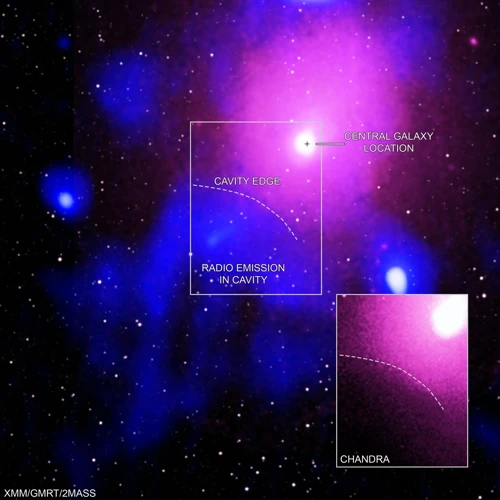
At the heart of our quest to understand the mysteries of the universe lies the enigmatic entity known as a black hole. Black holes are celestial objects with an immense gravitational pull that is so strong, not even light can escape its grasp. These cosmic anomalies are formed from the remnants of massive stars that have undergone a catastrophic collapse, resulting in a gravitational singularity. The gravitational force exerted by a black hole is so intense that it warps the fabric of spacetime itself, giving rise to intriguing phenomena such as the event horizon. This boundary marks the point of no return, where anything that crosses it is forever trapped within the black hole’s grasp. The concept of black holes continues to baffle scientists and stir the depths of our imagination, driving us to probe the boundaries of our understanding of the universe.
The Formation of Black Holes
The formation of black holes is a fascinating cosmic process that occurs under specific conditions in the vast expanse of space. There are three primary mechanisms through which black holes can form: stellar black holes, supermassive black holes, and primordial black holes.
1. Stellar Black Holes: These black holes are formed from the remnants of massive stars that have reached the end of their lives. When a massive star exhausts its nuclear fuel, it undergoes a gravitational collapse. The core of the star implodes, causing a supernova explosion that expels the outer layers into space. What remains is a dense core, known as a stellar remnant. If this remnant has a mass more than three times that of the Sun, it will continue collapsing under its own gravity, forming a stellar black hole. These black holes range in mass from a few times that of the Sun to several tens of times the Sun’s mass.
2. Supermassive Black Holes: Supermassive black holes reside at the centers of galaxies, including our own Milky Way. The exact process of their formation is still a topic of active research, but they are believed to form through the gradual accretion of mass over long periods of time. It is thought that these black holes may have originated from the collisions and mergers of smaller black holes, as well as the accretion of massive amounts of interstellar gas and dust.
3. Primordial Black Holes: Primordial black holes, as the name suggests, are believed to have formed shortly after the Big Bang. They differ from stellar and supermassive black holes in terms of their size and mass. Primordial black holes can have mass as small as a fraction of a gram or as large as a mountain range. Their formation is associated with fluctuations in the early universe’s density during the period of cosmic inflation.
The process of black hole formation is a remarkable consequence of the complex interplay between gravity, matter, and the lifecycle of stars. By understanding the mechanisms that lead to their formation, scientists can further unravel the mysteries surrounding these enigmatic objects and gain deeper insights into the fundamental nature of the universe.
The Characteristics of Black Holes
When investigating the characteristics of black holes, several fascinating aspects come to light. First and foremost, due to their immense gravitational pull, black holes possess an incredible density, squeezing an enormous amount of matter into a minuscule volume. This density gives rise to a gravitational force that defies comprehension, exerting an influence on the surrounding spacetime fabric as well as any matter that happens to come within its reach. Another characteristic of black holes is their ability to distort spacetime, creating a phenomenon known as gravitational lensing. As light passes near a black hole, its path is bent, resulting in the illusion of distorted images. Black holes can spin, imparting a rotational motion to the spacetime fabric in their vicinity. This rotation generates a whirlpool-like effect, known as frame-dragging, which can alter the trajectory of objects and light. The fascinating attributes of black holes continue to captivate scientists and push the boundaries of our understanding of the cosmos. Through ongoing research and observation, we strive to unlock the secrets held within these captivating entities.
The Gravitational Singularity
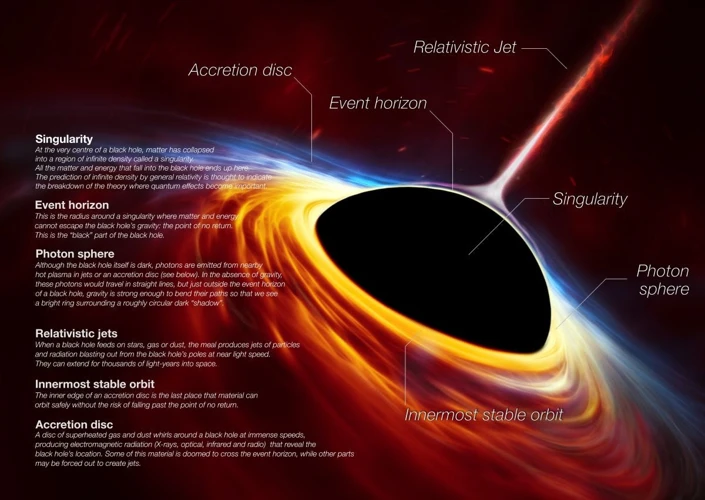
At the heart of a black hole lies a mind-bending concept known as the gravitational singularity. A gravitational singularity is a point within a black hole where the laws of physics break down and our current understanding of the universe falls short. The singularity is believed to be an infinitely dense and infinitely small region, where matter is compressed to an incomprehensible state. It is a place where the laws of general relativity, our best theory of gravity, meet the limits of our knowledge. Inside the gravitational singularity, the fabric of spacetime becomes infinitely warped, and all concepts of time and space lose their meaning. However, due to the intense gravitational pull, the singularity is hidden from our view behind the event horizon. As fascinating and perplexing as the gravitational singularity is, it remains largely uncharted territory for scientists. The study of this phenomenon holds the potential to unlock deeper insights into the nature of the universe and challenge our fundamental understanding of reality.
The Event Horizon
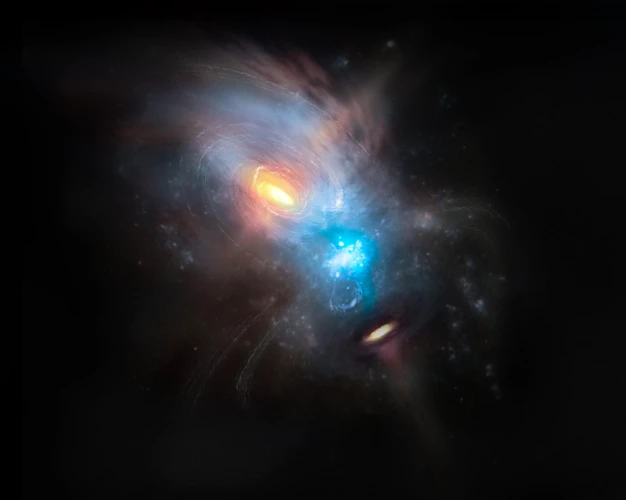
Standing at the cosmic frontier, the event horizon is a defining feature of black holes that holds a profound significance in our quest to unravel the mysteries of the universe. The event horizon acts as an invisible boundary beyond which the gravitational pull of a black hole becomes so intense that even the fastest forms of matter, such as light, cannot escape its clutches. This point of no return is where the laws of physics as we understand them are pushed to their limits, creating a portal into the unknown. The existence of the event horizon hints at the unfathomable depths of spacetime curvature and the magnificence of the gravitational forces at play. Our journey to understand black holes and the enigma of their event horizons pushes us to question the fundamental nature of the universe and challenges us to expand the boundaries of scientific knowledge.
Defining the Event Horizon
The event horizon is a crucial concept in understanding the nature of black holes. Defined as the boundary surrounding a black hole, it represents the point at which the gravitational pull becomes so strong that no object, including light, can escape its clutches. Beyond this point, the gravitational force is overpowering, creating an environment where the laws of physics as we know them cease to apply. The event horizon marks the point of no return for anything that ventures too close to the black hole’s immense gravitational field.
To visualize the concept of the event horizon, imagine an invisible sphere surrounding the black hole. Anything that crosses this invisible threshold is inexorably drawn towards the singularity at the center of the black hole. This means that once an object has passed the event horizon, no force or power in the universe can prevent its ultimate fate of being consumed by the black hole.
Interestingly, the size of the event horizon depends on the mass of the black hole. The more massive the black hole, the larger the event horizon. In fact, it is the size of the event horizon that scientists use to determine the mass of a black hole. The event horizon provides valuable insights into the nature of these cosmic wonders, allowing astronomers to study and analyze their properties even though their interiors remain hidden from direct observation.
Understanding the event horizon is crucial for comprehending the extreme nature of black holes and their impact on the surrounding spacetime. It is a gateway to the mysteries and mind-bending physics that lie within these celestial marvels. The event horizon is a testament to the awe-inspiring, yet perplexing, nature of black holes and showcases the immense gravitational power that shapes the fabric of our universe.
The Role of Escape Velocity
The role of escape velocity is crucial in understanding the nature of black holes. Escape velocity refers to the minimum speed an object needs to achieve in order to escape the gravitational pull of a celestial body. In the case of a black hole, the escape velocity exceeds the speed of light, making it impossible for anything, including light itself, to escape its gravitational grip. This phenomenon is a direct result of the massive amount of mass compacted into a small region, creating an extremely strong gravitational field. The escape velocity becomes greater as the distance from the black hole decreases, meaning that objects or particles closer to the event horizon would require greater speed to break free from its gravitational clutches. This fascinating aspect of black holes highlights the immense power and gravitational intensity that defines these cosmic enigmas. Understanding the role of escape velocity opens up a deeper comprehension of the profound impact a black hole has on its surroundings, forever altering our perception of the universe.
Spacetime Warping
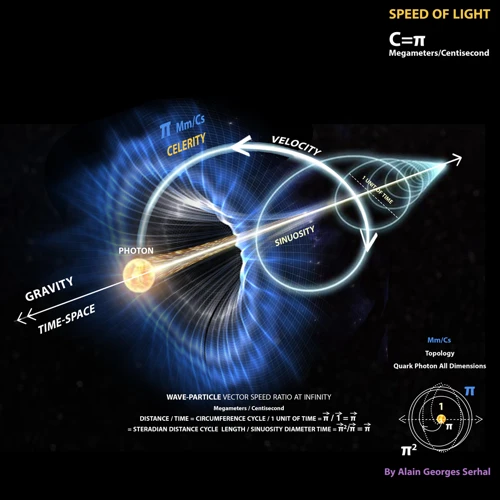
One of the most fascinating aspects of black holes is their ability to warp the fabric of spacetime. According to Einstein’s theory of general relativity, the presence of mass and energy in the universe causes spacetime to curve. Imagine spacetime as a flat sheet, and a black hole as a heavy object placed on that sheet. The massive gravitational pull of the black hole causes the sheet to warp and create a depression in the fabric. This warping effect, known as spacetime curvature, alters the trajectory of objects around the black hole. Light itself follows the curved path in spacetime, leading to phenomena such as gravitational lensing, where the path of light is bent by the immense gravitational field of a black hole. Additionally, the warping of spacetime near a black hole is responsible for the phenomenon of time dilation, where time is perceived to pass more slowly in the presence of strong gravity. The concept of spacetime warping offers a window into the profound interplay between gravity and the fabric of the universe, pushing the boundaries of our understanding and inviting further exploration into the mysteries of the cosmos.
Einstein’s Theory of General Relativity
Einstein’s Theory of General Relativity is a revolutionary framework in modern physics that transformed our understanding of gravity and the nature of spacetime. According to this theory, gravity is not a force exerted by massive objects, but rather a result of the curvature of spacetime caused by those objects. Einstein proposed that massive objects, such as stars and planets, create a gravitational field that warps the fabric of spacetime itself. This warp in spacetime is what we experience as the force of gravity.
Einstein’s theory introduced the concept of the spacetime continuum, which combines the three dimensions of space with the dimension of time into a single interconnected fabric. In this framework, objects with mass or energy cause spacetime to curve, altering the path of other objects that move through it. The more massive an object, the greater its impact on the curvature of spacetime.
The theory also predicted several phenomena that have been confirmed through observations, such as gravitational time dilation and the bending of light around massive objects. Gravitational time dilation, for example, occurs when the strength of gravity causes time to pass more slowly. This effect has been observed in experiments, as well as in the behavior of clocks in high-gravity environments, such as near black holes.
Einstein’s theory paved the way for understanding the relationship between matter and energy through the famous equation E=mc². This equation shows that matter can be converted into energy and vice versa. It has significant implications for our understanding of the cosmos, including the immense energy released during processes like nuclear fusion in stars.
In summary, Einstein’s Theory of General Relativity revolutionized our understanding of gravity and introduced the concept of spacetime curvature. Its predictions have been confirmed through various observations and experiments over the years, solidifying its place as one of the fundamental pillars of modern physics. Without this theory, our comprehension of black holes and their effects on spacetime would be incomplete. For more information on the discoveries unlocking the secrets of the universe, check out our article on planetary alignments.
Curvature of Spacetime
The concept of the curvature of spacetime lies at the heart of Einstein’s theory of general relativity, providing a framework for understanding the gravitational effects of massive objects such as black holes. In this theory, mass and energy warp the fabric of spacetime, creating a curvature that influences the path of objects moving within it. The presence of a massive object, such as a black hole, causes spacetime to bend and deform, much like a heavy ball placed on a stretched sheet. The extent of this curvature depends on the mass and proximity of the object, with more massive objects creating a deeper curvature. Objects moving near a black hole will follow a curved trajectory dictated by the curvature of spacetime, appearing to be deflected from their otherwise straight path. This phenomenon, known as gravitational lensing, has been observed and confirmed through astronomical observations. Furthermore, the curvature of spacetime near a black hole’s event horizon is so extreme that it becomes infinitely steep, leading to the concept of a gravitational singularity at the heart of the black hole. The curvature of spacetime is a fundamental aspect of understanding black holes and their gravitational influence on the surrounding universe. It is through this curvature that we can begin to comprehend the profound implications of these cosmic enigmas.
Effects on Light and Time
The gravitational pull of a black hole has profound effects on both light and time. When light enters the intense gravitational field near a black hole, it gets bent and distorted due to the spacetime curvature caused by the immense mass of the black hole. This phenomenon, known as gravitational lensing, can lead to the formation of captivating visual illusions as light takes a curving path around the black hole. The intense gravitational pull of a black hole also causes a phenomenon called time dilation. As an observer approaches the event horizon of a black hole, time appears to slow down for them compared to distant observers. This means that time moves slower in the vicinity of the black hole, creating a gravitational time dilation effect. It is a mind-boggling concept to comprehend that time itself can be distorted by the immense gravity of a black hole. These effects on light and time not only challenge our intuitions but also play a crucial role in our understanding of the universe and the fundamental nature of spacetime.
Black Holes and Time Travel
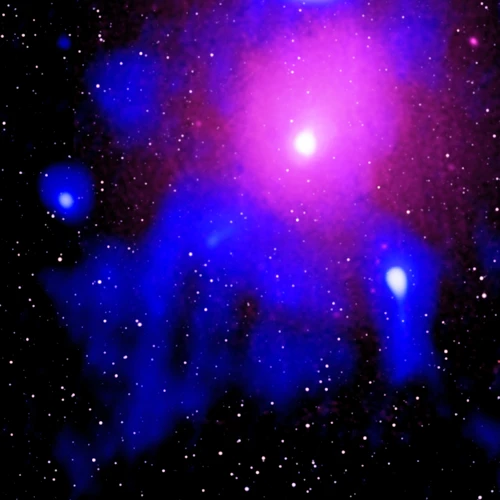
Black holes, with their ability to bend and warp spacetime, have long captivated our fascination with the possibility of time travel. According to Einstein’s theory of general relativity, the immense gravitational pull of a black hole can cause a phenomenon known as time dilation. This means that time moves at a different rate near a black hole compared to areas of weaker gravity. As one approaches the event horizon of a black hole, time slows down significantly, creating the potential for time travel into the future. However, traveling back in time through a black hole poses numerous paradoxes and challenges that have yet to be fully understood. The presence of wormholes, hypothetical shortcuts through spacetime, has been theorized as a possible bridge for traversing vast distances or even enabling travel across different eras. While the concept of black holes and time travel remains a subject of ongoing scientific speculation, it continues to spark our curiosity and beckon us to unlock the secrets of the universe.
Time Dilation and Wormholes
Time dilation and wormholes are fascinating concepts that further deepen the complexities of black holes and their impact on spacetime. Time dilation refers to the phenomenon where time passes at different rates depending on the strength of the gravitational field. As an object approaches the intense gravitational pull of a black hole, time slows down relative to an observer far from the black hole. This means that time appears to move more slowly for someone in the vicinity of a black hole compared to someone observing from a greater distance. The extreme gravitational forces around black holes can cause significant time dilation, creating a stark contrast in the perception of time between those near the event horizon and those further away.
But what about wormholes? Wormholes are theoretical passages through spacetime that could potentially act as shortcuts between two distant regions or even different universes. They are often depicted as tunnels or bridges that connect distant areas of the universe, bypassing the need to travel through space at conventional speeds. Although wormholes are hypothetical and have not been observed, they emerge as a fascinating possibility within the realm of black hole physics. Some theories propose that if a black hole were to connect to a white hole, it could form a traversable wormhole, allowing for rapid travel between two distant points in spacetime.
While the existence and practicality of wormholes remain speculative, they continue to captivate the minds of scientists and enthusiasts alike. The exploration of wormholes holds the potential to revolutionize our understanding of spacetime and the possibilities for interstellar travel, as it could provide a shortcut through vast cosmic distances. However, much more research and understanding are needed to unravel the complexities of these intriguing phenomena and determine their validity in reality. Regardless, the concepts of time dilation and wormholes remind us of the boundless wonders that black holes offer and the mysteries that await our exploration.
Potential for Time Travel
The existence of black holes gives rise to intriguing concepts, including the potential for time travel. While it may sound like science fiction, some theories suggest that the extreme spacetime curvature near black holes could create opportunities for traversing through time. One phenomenon that allows for potential time travel near black holes is time dilation. According to Einstein’s theory of general relativity, gravity affects the passage of time. In the presence of a strong gravitational field, such as that near a black hole, time slows down. This means that an observer near a black hole would experience time passing more slowly than an observer further away from the gravitational pull. In extreme cases, time dilation near black holes could lead to a time difference between two observers, allowing for the possibility of one observer traveling forward in time relative to the other. However, harnessing this potential for time travel is currently purely theoretical and faces numerous challenges, including the immense gravitational forces and the nature of singularities within black holes. Nonetheless, the notion of time travel near black holes continues to captivate scientific speculation and fuel our curiosity about the mysteries of the universe.
Black Hole Information Paradox
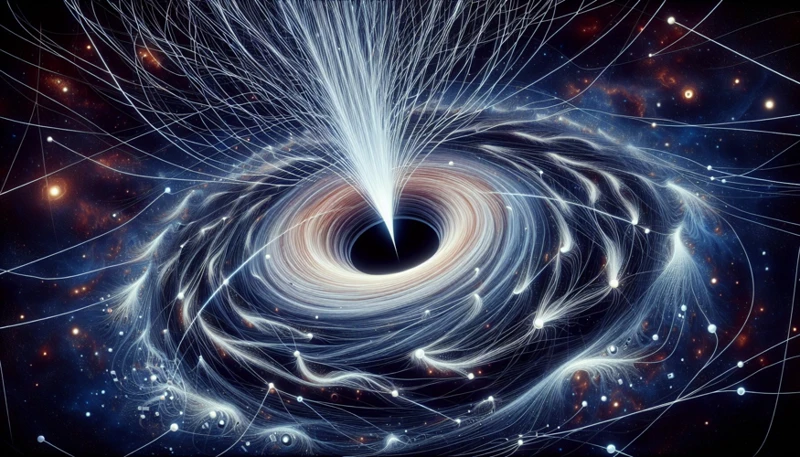
The Black Hole Information Paradox is a perplexing puzzle that has puzzled physicists for decades. According to quantum mechanics, information cannot be destroyed. However, black holes possess an immense gravitational pull that devours everything that enters their event horizon, seemingly obliterating any trace of information. This contradiction raises the question: What happens to the information of the swallowed matter? One possibility, suggested by theoretical physicist Stephen Hawking, is that black holes emit a form of radiation called Hawking radiation. This radiation carries away energy from the black hole, potentially containing encoded information about the matter that fell into it. If this is true, it would resolve the paradox and uphold the principles of quantum mechanics. The resolution of the Black Hole Information Paradox continues to be a topic of intense research, pushing the boundaries of our understanding of the fundamental laws of the universe.
Hawking Radiation
Hawking Radiation, named after the famous physicist Stephen Hawking, is a groundbreaking theory that suggests black holes are not entirely black after all. According to this theory, black holes have the ability to emit particles and energy over time. This phenomenon arises from the interaction between quantum mechanics and the extreme gravitational pull of black holes. In quantum field theory, the vacuum is not truly empty, but instead teems with virtual particle-antiparticle pairs spontaneously popping in and out of existence. When this occurs near the event horizon of a black hole, one of the particles may fall into the black hole while its antiparticle escapes into space. This process results in a slow leakage of energy from the black hole, which is known as Hawking Radiation. Remarkably, this radiation causes the black hole to slowly lose mass over time until it eventually evaporates and disappears altogether. This concept challenged the previously held belief that black holes consume all matter and energy without any release. It has profound implications on the ultimate fate of black holes and the preservation of information in the universe. As scientists continue to study and refine the theory of Hawking Radiation, its significance in our understanding of black holes and the broader nature of the cosmos becomes increasingly apparent. Native American mythology is replete with stories that symbolize the interconnectedness between humans and the animal kingdom, revealing deep wisdom and insights into the natural world.
Resolution of the Paradox
The resolution of the black hole information paradox has been the subject of intense scientific debate and research. One proposed solution comes from the groundbreaking work of renowned theoretical physicist Stephen Hawking. Hawking introduced the concept of Hawking radiation, which suggests that black holes are not completely black, but instead emit particles over time. According to quantum mechanics, particles and their corresponding antiparticles can spontaneously appear and annihilate each other near the black hole’s event horizon. In certain cases, one particle escapes while the other falls into the black hole. This process is known as quantum tunneling, and it allows for energy to be extracted from the black hole’s gravitational field. Hawking’s theory implies that black holes gradually lose mass and eventually evaporate completely. As a result, the information that was thought to be lost within the black hole is encoded in the radiation, which goes against the idea of an unrecoverable loss of information in the paradox. However, the precise mechanism by which information is preserved in the emitted radiation remains a subject of ongoing research and investigation. The resolution of the black hole information paradox marks a significant milestone in our understanding of the fundamental principles of the universe, pushing the boundaries of our knowledge and challenging long-held beliefs about the nature of black holes.
Observing and Studying Black Holes
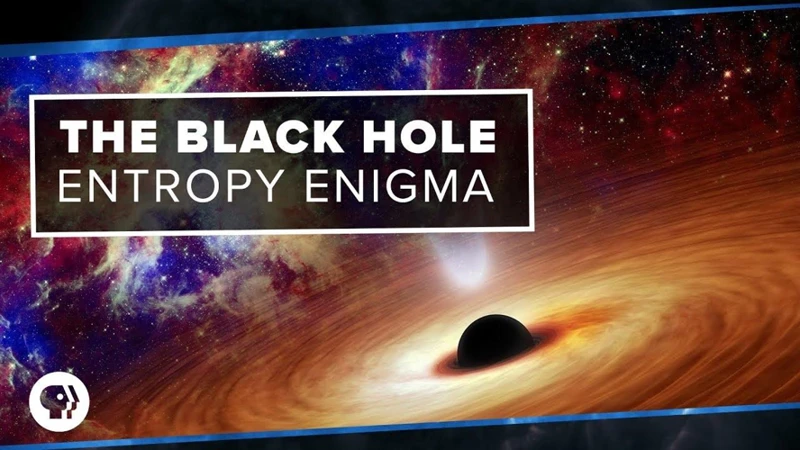
Observing and studying black holes, despite their elusive nature, have become possible through various technological advancements. Telescopic observations have provided valuable insights into the behavior and characteristics of black holes. By analyzing the emissions of X-rays, gamma rays, and other forms of radiation emitted by matter being pulled into a black hole, scientists can gather information about its mass, spin, and surrounding environment. The recent discovery of gravity waves has opened up a new realm of studying black holes. These ripples in spacetime, caused by violent events such as black hole collisions, provide direct evidence of their existence. By detecting and analyzing these gravity waves, scientists can further unravel the secrets of these enigmatic celestial objects and gain a deeper understanding of the universe we inhabit.
Telescopic Observations
Telescopic observations play a crucial role in our quest to study and understand black holes. Through the use of powerful telescopes, astronomers can gather valuable data and insights about these cosmic enigmas. One method of telescopic observation involves studying the behavior of stars that are in close proximity to black holes. These stars, known as binary systems, orbit around black holes and provide scientists with valuable information about the black hole’s mass and gravitational effects. By carefully observing the movement and behavior of these binary star systems, astronomers can deduce the presence of a black hole in the vicinity. Another technique is known as gravitational lensing, where the immense gravity of a black hole bends and distorts the path of light from distant objects behind it. This phenomenon creates a magnifying effect, allowing astronomers to observe and study objects that would otherwise be too distant or faint to detect. Additionally, telescopic observations can provide insights into the accretion disks surrounding black holes, which are swirling disks of gas and dust that get pulled towards the black hole due to its gravitational pull. By analyzing the emissions and fluctuations of this material, scientists can gain a better understanding of the behavior and dynamics of black holes. Although telescopic observations have advanced our knowledge of black holes significantly, there is still much to discover, and scientists continue to push the boundaries of technology and expertise to unlock the secrets of these celestial mysteries.
Link to associated article: Role of Women in Ancient Greek Society
Gravity Waves and Black Hole Collisions
Gravity waves and black hole collisions are awe-inspiring events that provide valuable insights into the nature of black holes and the dynamics of the universe. Gravity waves are ripples in the fabric of spacetime itself, propagating outward from massive astrophysical events such as the collision of black holes. When two black holes merge, they unleash an immense amount of energy in the form of gravitational waves, which propagate outward at the speed of light. These gravitational waves carry crucial information about the masses and spins of the merging black holes, allowing scientists to study the properties of these cosmic giants. By detecting and analyzing these gravity waves, astronomers have made significant breakthroughs in our understanding of black holes and their role in the universe. The Laser Interferometer Gravitational-Wave Observatory (LIGO) is a pioneering scientific instrument that detects these elusive gravity waves. LIGO consists of two identical detectors, each with perpendicular arms several kilometers long, designed to measure infinitesimal changes in spacetime caused by passing gravity waves. The first direct detection of gravity waves in 2015 confirmed Einstein’s predictions and opened up a new era of gravitational wave astronomy. Since then, LIGO and other gravitational wave detectors have detected numerous black hole mergers, providing valuable data for studying the formation and evolution of black holes. These observations have not only confirmed the existence of black holes but have also shed light on the mysterious processes that occur during their collisions. As scientists continue to study gravity waves and black hole collisions, new discoveries await, offering a deeper understanding of the cosmos and the extraordinary phenomena that populate it.
The Role of Black Holes in the Universe
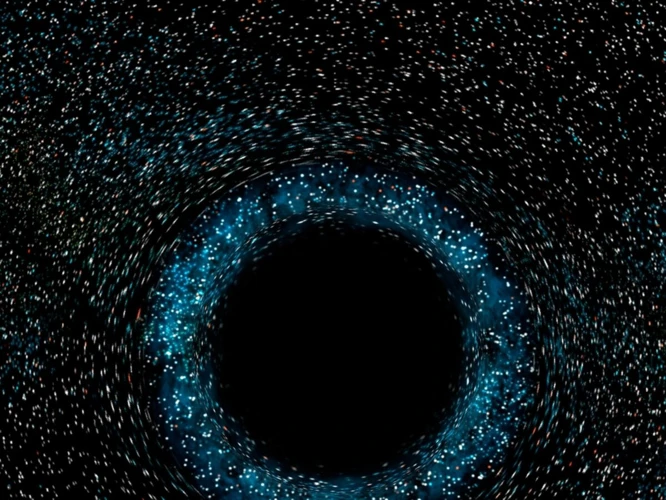
Black holes play a crucial role in shaping and influencing the universe on a grand scale. One of the key roles that black holes fulfill is as cosmic engines of energy and matter. As matter falls into a black hole, it undergoes a process called accretion, releasing an incredible amount of energy in the form of X-rays and jets of high-energy particles that shoot out into space. These energetic processes not only affect the immediate surroundings of the black hole but also have far-reaching effects on the larger cosmic environment. Black holes are also believed to have a significant impact on galaxy formation and evolution. As masses of gas and dust interact with a central supermassive black hole, they can trigger intense bursts of star formation and influence the dynamics of the surrounding galaxy. This interplay between black holes and galaxies is a complex and fascinating area of research in astrophysics, shedding light on the interconnectedness of cosmic structures. Black holes are thought to be instrumental in the distribution and recycling of heavy elements, as they can emit powerful jets that enrich the interstellar medium with these elements. This process contributes to the biodiversity of the universe, bolstering the creation of new stars and planetary systems. The role of black holes in the evolution, energy production, and material enrichment of the universe is an ongoing topic of investigation, and further research promises to deepen our understanding of these cosmic powerhouses.
Conclusion

In conclusion, the exploration of black holes has provided us with a deeper understanding of the intricate workings of our vast universe. These cosmic enigmas, with their immense gravitational pull and the formation of event horizons, push the boundaries of our knowledge and challenge our understanding of spacetime. While much is still unknown and shrouded in mystery, the study of black holes has led to remarkable discoveries and insights into the nature of gravity and the fabric of the universe.
Through the lenses of telescopes and the detection of gravity waves, astronomers have observed and studied these celestial marvels, unveiling a wealth of information about their properties and behaviors. The recent breakthrough of capturing the first-ever image of a black hole has further expanded our understanding and ignited fresh excitement within the scientific community.
Additionally, black holes have sparked fascinating speculations about the potential for time travel. The concepts of time dilation and the possibility of wormholes offer enticing possibilities for exploring the mysteries of the past, present, and future. However, much research and exploration are still needed to fully comprehend the implications and practicality of utilizing black holes as gateways to other points in spacetime.
Furthermore, the black hole information paradox, proposed by Stephen Hawking, has stimulated intense debate among physicists. The existence of Hawking radiation challenges the notion that information is lost forever within the event horizon, hinting at a possible resolution to this intriguing puzzle. As we continue our research, it is important to grapple with the profound questions raised by black holes and their impact on our understanding of the fundamental laws governing the universe.
In summary, black holes are awe-inspiring cosmic wonders that defy our comprehension. They embody the extremes of physics and provide a lens through which we can explore the intricacies of spacetime and gravity. As we uncover further insights and push the boundaries of scientific understanding, the study of black holes will continue to captivate our imagination while unraveling the mysteries of the universe at large.
Frequently Asked Questions

How are black holes formed?
Black holes are formed from the remnants of massive stars that undergo a gravitational collapse. When a star runs out of nuclear fuel, it can no longer support its own weight, causing it to implode. This implosion leads to the formation of a black hole.
What is the event horizon of a black hole?
The event horizon is the point of no return around a black hole. Once an object crosses the event horizon, it is trapped by the black hole’s gravity and cannot escape, not even light.
Can anything escape from a black hole?
As per our current understanding of physics, nothing can escape from a black hole once it has crossed the event horizon. The gravitational pull is so strong that even light cannot escape.
What is a gravitational singularity?
A gravitational singularity is a point of infinite density and zero volume located at the core of a black hole. It is where the laws of physics as we know them break down, and our current understanding cannot fully explain the conditions within the singularity.
How does a black hole warp spacetime?
According to Einstein’s theory of general relativity, the immense mass of a black hole warps the fabric of spacetime around it. This warping creates a gravitational field that influences the motion of objects and even bends the path of light.
Can black holes be used for time travel?
The concept of using black holes for time travel is still purely speculative. While black holes theoretically allow for the possibility of time dilation, extreme gravitational forces near black holes make the practical implementation of time travel currently unfeasible.
What is the Black Hole Information Paradox?
The Black Hole Information Paradox is a theoretical puzzle that arises when considering the fate of information (such as the properties of matter) that falls into a black hole. According to quantum mechanics, information cannot be destroyed, but black holes seem to violate this principle. Solving this paradox remains an active area of research.
How do scientists study black holes?
Scientists study black holes through a variety of methods. They use telescopes to observe the effects of black holes on nearby matter and analyze the emitted X-rays and other radiation. Additionally, the recent discovery of gravitational waves has provided a new way to detect and study black holes.
Do black holes play a role in the formation of galaxies?
Yes, black holes are believed to play a crucial role in the formation and evolution of galaxies. Supermassive black holes reside at the centers of most galaxies, and their gravitational influence helps shape the galaxy, control star formation, and regulate the flow of matter within it.
What is the significance of studying black holes?
Studying black holes expands our understanding of the fundamental laws of physics. Additionally, they provide insights into the nature of spacetime, gravity, and the evolution of the universe. Black holes act as cosmic laboratories where extreme conditions allow us to push the boundaries of our current scientific knowledge.
References
- Unraveling the Mysteries of Black Holes | by Dufbasec
- Unravelling the Long-Standing Mystery of Black Holes
- Unraveling the Mysteries of Black Holes
Frequently Asked Questions

FAQ 1: How are black holes formed?
Black holes are formed through the collapse of massive stars. When a star runs out of fuel to sustain nuclear reactions, it undergoes a supernova explosion, leaving behind a dense core known as a neutron star. If the core is even more massive, it continues to collapse under its own gravity, forming a black hole.
FAQ 2: What are the characteristics of black holes?
Black holes possess immense gravitational pull, so strong that nothing, not even light, can escape their grasp. They have a singularity at their center, which is a point of infinite density. Black holes also have an event horizon, which is the boundary beyond which any object is irreversibly pulled into the black hole.
FAQ 3: What is the gravitational singularity?
The gravitational singularity is the infinitely dense and infinitely small point at the center of a black hole. It is where all the mass of the black hole is concentrated, creating an incredibly strong gravitational field.
FAQ 4: What is the event horizon of a black hole?
The event horizon is the boundary of a black hole beyond which escaping its gravitational pull becomes impossible. Once an object crosses the event horizon, it is destined to be pulled into the black hole. The event horizon is also the point where time itself slows down significantly.
FAQ 5: What is the role of escape velocity in black holes?
The escape velocity is the speed needed to escape the gravitational pull of an object. In the case of a black hole, the escape velocity exceeds the speed of light, making it impossible for anything, including light, to escape from within the event horizon.
FAQ 6: How does Einstein’s theory of general relativity explain black holes?
Einstein’s theory of general relativity describes gravity as the curvature of spacetime caused by the presence of mass and energy. In the case of black holes, the immense mass creates a deep curvature, causing spacetime to deform drastically.
FAQ 7: Can black holes be used for time travel?
Black holes are believed to have the potential to create time dilation effects. However, using black holes for time travel is purely hypothetical and not yet proven scientifically. Wormholes, another theoretical concept, might provide a pathway for time travel, but their existence is currently uncertain.
FAQ 8: What is the Hawking radiation and the black hole information paradox?
Hawking radiation is a theoretical prediction that suggests black holes slowly lose mass and energy over time. This poses a paradox because the information inside a black hole appears to be irretrievably lost, contradicting the principle of information preservation in physics.
FAQ 9: How do scientists observe and study black holes?
Scientists observe black holes through telescopes that capture different forms of radiation, such as X-rays, gamma rays, and radio waves. They also study the gravitational waves emitted when two black holes collide. These observations help gather data and improve our understanding of black holes.
FAQ 10: What is the role of black holes in the universe?
Black holes play a crucial role in the universe. They contribute to the formation and evolution of galaxies, influencing the distribution of stars and the growth of supermassive black holes at galactic centers. Black holes also help recycle matter and energy, shaping the dynamics of the cosmic environment.
References
- Unraveling the Mystery of Black Holes | Tufts Now
- Unraveling the Mysteries of Black Holes | by Dufbasec
- Unravelling the Long-Standing Mystery of Black Holes







